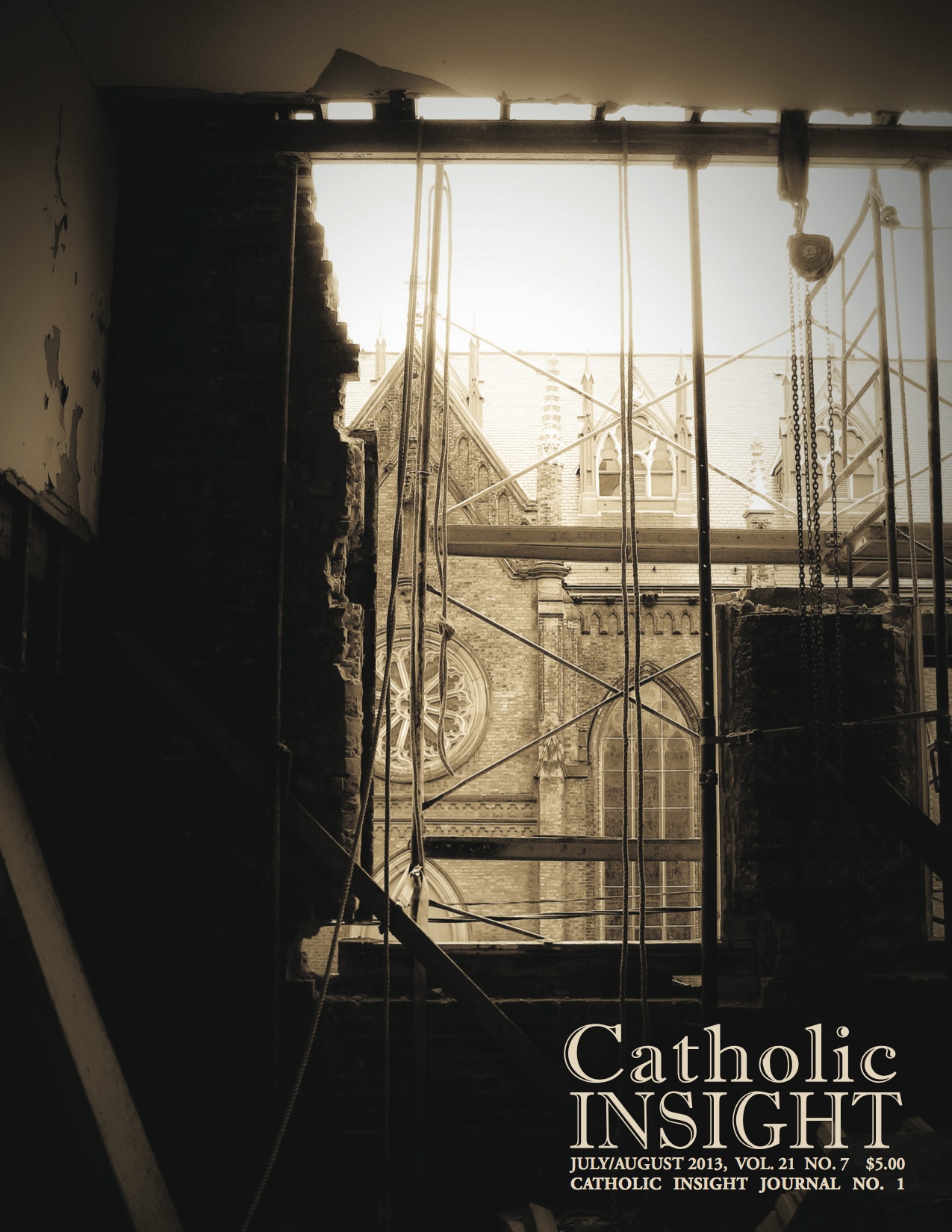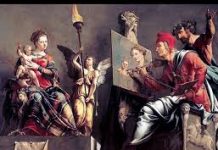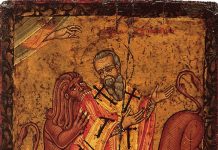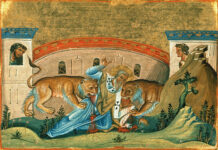Our July/August 2013 cover artist is Jonathan Castellino, a hobby urban archaeologist and photographer based in the city of Toronto. His photographs document the intersection of built environment and cultural landscape as it speaks to the social imagination. While focusing primarily on contemporary urban ruins, his work also tends to take a broader perspective, examining the place and meaning of these spaces in urban life.
What is this piece about?
This photograph is part of a series entitled “empty.vessels.” The circumstance of the image is a cathedral as seen from an abandoned parsonage undergoing demolition in downtown Toronto. Much of my photography concerns itself with derelict space—that is to say, places after people. I find former places of worship particularly intriguing and have been exploring and documenting them for years. I am always curious to see what remains. Urbanites find modern ruins difficult to stomach. The combined effect of a poorly developed imagination and economics always seem stacked against the decaying buildings. Not wanting to give in to the creeping cultural amnesia actively pursued by many city planners, I try to document these places—to give them one last breath—before they disappear. The building from which this image was taken is now a parking lot.
When did you start taking photographs?
I began making photographs about a decade ago. I had had a pedestrian interest in photography as art before that point, but only began to turn my own snapshots into compositions ten years ago.
From whom or what did you learn?
Learning has a great deal to do with listening. I am a terrible listener, but I am working on it. I am not sure about mentors as such, since I am not formally trained in photography. I would say that music has likely been my greatest teacher. And cities. And friends.
Why did you continue in the medium? What draws you to it?
I always hold that photography is a lived experience that happens to manifest itself in the images we see. Continuation, then, is a function of inspiration. As long as people continue to interact with their built environment in interesting ways, I will continue to photograph them doing so. I am naturally drawn to the city—to its creation, its elements of ruin, and to exploring the hidden, too often unseen, spaces within it.
What do you do with your pieces? Are they ever shown? Are they for sale?
I try to make my images available to as many people as possible. My mission is to encourage people to explore the built world around them. Fortunately, my work has found its way into newspapers, magazines, journals, websites, galleries, and, recently, television—any public space, physical or electronic, is fair game as far as I am concerned. I maintain a website daily (sacramentalperception.com), but have no real control over where interest comes from. Unfortunately, some people are drawn solely to the subversive elements within my work (necessary trespassing, et cetera). Like all things, it is open to misuse. I have no control over this.
How would you define beauty?
Beauty defines life. Or of what it should consist. That we are allowed to participate in its Mystery is our joy. We have tried, as is our wont, to control it. In the process, we have created an economy of the aesthetic. We expect it, and cannot accept it as a freely given gift. As an artist, to try and place manufactured barriers on its fullness at one end limits experience, and at the other is an attempt to constrain what is fundamentally beyond description—and yet observable through lived experience (if we are open to it).
What is the purpose of art?
The role or purpose of art in our lives is to serve as a reminder. We have a sense that the world of perception is illusive and created. Through the acceptance of the gifts of beauty we feel that we are able to draw back the veil cast over our senses, if only briefly, and stare into a greater communion. We are partial to art. That is to say, it is incomplete without us.
Who inspires you and what inspires you?
Inspiration comes in the form of an experience. Experiences have impact. What impacts me (and my work by relation) is constantly evolving. For the present, it is the work of great artists, among them writers: W. G. Sebald, Annie Dillard, T. S. Eliot, and George Steiner come immediately to mind. These are writers whose unique visions of our interaction with and dealings with life shock and astound me. Their work offends what the majority of my senses are told, on a daily basis, to believe. In a word, they are hopeful.











